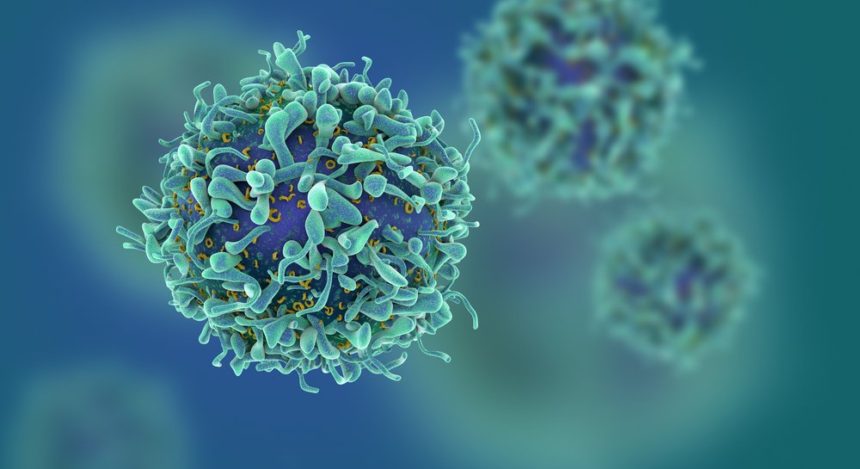This post was originally published on this site
Scientists discovered a set of genes that work as an “on/off switch” for malignant multiple myeloma cancer cells, which may shed light into new therapeutic targets for the disease, and for other types of cancers with a higher tendency to spread to bones.
The findings of the study, “A Niche-Dependent Myeloid Transcriptome Signature Defines Dormant Myeloma Cells,” were published in Blood.
Multiple myeloma is a type of blood cancer characterized by the infiltration of malignant plasma cells into the bone marrow. Despite current therapies, chemotherapy, and stem cell transplant, most patients relapse because tumor cells manage to evade being targeted and killed by immune cells.
Part of the reason the cancer cells escape targeting by immune cells or chemotherapy agents is because they remain dormant, or “asleep,” in a secluded place — usually inside the bone marrow — for long periods of time, sometimes for years.
However, when these cells are reactivated and “wake up,” they usually travel to other regions in the body, giving rise to aggressive cancer metastases. These metastases are responsible for up to 90% of all cancer deaths. Therefore, understanding the mechanisms that controls how these cancer cells go from being dormant to becoming active is crucial for devising new strategies to overcome the disease.
Researchers from the Garvan Institute of Medical Research in Australia, and their collaborators from Israel, are investigating how cancer cells are able to remain dormant.
To find out, the investigators wanted to analyze the genetic signature of these cells by profiling their transcriptome — the group of all RNA molecules, or transcripts, produced from active genes in a cell or tissue. Their goal was to determine which genes might be working as an “on/off switch” for these cells.
However, in order to do that, scientists first needed to isolate these elusive dormant cancer cells. This was a challenge, as these cells are rare — often less than one in hundreds of thousands of cells in the bone.
The Garvan team developed a method, four years ago, to track these dormant cancer cells “hidden” inside the bones of living mice, using high-resolution intravital two-photon microscopy. This imaging technique allows researchers to visualize microscopic structures in living animals. With this technique, the investigators were able to isolate and analyze the genetic signature of some of these “sleeping” cells.
“Having been able to identify the rare dormant cells, we were able to isolate them and work out all the genes which were active. What is exciting is that we discovered many of these genes in dormant cells are not normally switched on in these cancer cells. Now that we know the identity of these genes, we can use that information to target them,” Weng Hua Khoo, first author of the study, said in a press release.
Remarkably, they found the transcriptome of dormant cancer cells was similar to that of immune cells.
One of the most highly expressed genes they found was the AXL gene, which is involved in cell growth, migration, and anti-inflammation. Interestingly, when researchers silenced AXL, dormant cancer cells became active — indicating this gene is one of the gatekeepers controlling the “on/off switch” of these cells.
Even more surprising was the realization that these genes, normally turned on in immune cells, were only activated when dormant cancer cells were in contact with osteoblasts, which are cells responsible for bone formation. The osteoblasts are normally found in the bone marrow.
“This showed us just how crucial the cross-talk between the tumor cells and the tumor microenvironment is for cancer dormancy,” said Ido Amit, principal investigator at the Weizmann Institute in Israel.
Further analysis also demonstrated that the transcriptome profile of dormant cancer cells was linked to a two-fold increase in patients’ overall survival. The researchers said this indicated that “this dormancy signature may be a marker of disease progression.”
Now, the team is analyzing dormant cancer cells from other types of cancers in hopes of finding a common gene that would allow them to target all dormant cells at once. They also are trying to come up with different strategies to get rid of dormant cancer cells.
“There are different approaches to targeting dormant cells. One is to keep them dormant indefinitely by creating an environment that stops them from waking up. A second approach is to deliberately wake them up, which can then make them susceptible to being targeted with conventional chemotherapy,” said Peter Croucher, research director at Garvan and the study’s co-author.
“But the best approach would be to use this knowledge of what the genes are that keep cells in the dormant state to eradicate them while they’re dormant. This would stop the disease coming back or relapsing — this would be the Holy Grail,” he concluded.
The post Scientists Find ‘On/off Switch’ of Malignant MM Cancer Cells, May Lead to New Therapies, Study Says appeared first on Myeloma Research News.
The post Scientists Find ‘On/off Switch’ of Malignant MM Cancer Cells, May Lead to New Therapies, Study Says appeared first on BioNewsFeeds.


